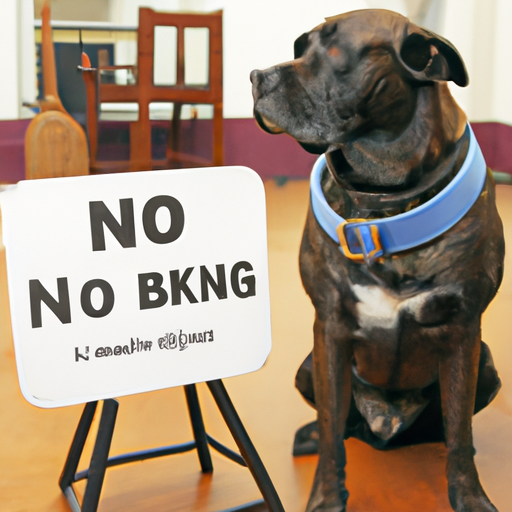A dog’s bark can be a beautiful symphony of emotions; it can be a joyful proclamation of love, an alert to danger or an expression of loneliness. But when your dog’s barking becomes a constant, disruptive noise, it can strain your relationship and cause stress in your home. Here are some techniques you can use to help shape your dog’s barking behavior.
1. Understanding Why Dogs Bark
Before we delve into the techniques, it’s important to understand why dogs bark. Barking is a form of communication for dogs. When they bark, they might be:
- Expressing excitement or happiness
- Alerting to danger or a stranger
- Indicating boredom or loneliness
- Reacting to fear or stress
- Demanding attention
Understanding the underlying cause of your dog’s barking is the first step towards addressing it.
2. Remove or Mitigate the Trigger
Once you’ve identified what triggers your dog’s barking, try to remove or mitigate it. For example:
- If your dog barks at people or other dogs passing by the window, close the blinds or move your dog to another room.
- If your dog barks when left alone, try to provide more activities or companionship.
3. Use Desensitization and Counter-conditioning Techniques
Desensitization and counter-conditioning are professional terms for teaching your dog to react differently to the triggers.
Here’s a simple process:
- Identify the trigger.
- Start exposing your dog to the trigger at a low level.
- Reward your dog for not barking.
- Gradually increase the level of the trigger.
4. Train Your Dog to Be ‘Quiet’ on Cue
Training your dog to understand the command ‘quiet’ can be an effective way to control barking.
Teaching ‘quiet’ involves:
- Letting your dog bark for a bit.
- Saying ‘quiet’ in a calm but firm voice.
- When your dog stops barking, reward them with a treat or praise.
5. Use Distraction Techniques
Distracting your dog can be a quick and effective way to stop barking. It could be as simple as throwing a toy, turning on some calming music, or changing their environment.
6. Provide Plenty of Physical and Mental Stimulation
A bored dog is more likely to bark excessively. Regular exercise, mental stimulation (like puzzle toys), and social interactions can help reduce barking.
| Methods of Stimulation | Examples |
|---|---|
| Physical Exercise | Walks, Fetch, Tug-of-war |
| Mental Stimulation | Puzzle toys, Training sessions |
| Social Interactions | Playdates with other dogs, Family time |
7. Seek Professional Help
If your dog’s excessive barking continues despite your best efforts, it might be time to seek help from a professional dog trainer or a veterinary behaviorist.
8. FAQs
Q: How long does it take to train a dog not to bark?
A: The duration varies depending on the dog’s age, temperament, and the cause of barking. Consistency is key and remember, it’s a gradual process.
Q: What should I avoid when training my dog not to bark?
A: Avoid shouting or punishing your dog. This can increase anxiety and make the problem worse.
Q: Can certain dog breeds bark more than others?
A: Yes, some breeds are more vocal than others. However, excessive barking is usually a sign of an underlying issue.
Q: Can I use a bark collar to stop my dog from barking?
A: While bark collars can deter barking, they don’t address the root cause. It’s best to try training and behavior modification first.
Teaching your dog not to bark excessively is a journey. It takes time, patience, and understanding. But with dedication and love, you can help your dog express themselves in ways that make life better for both of you. Happy training!



